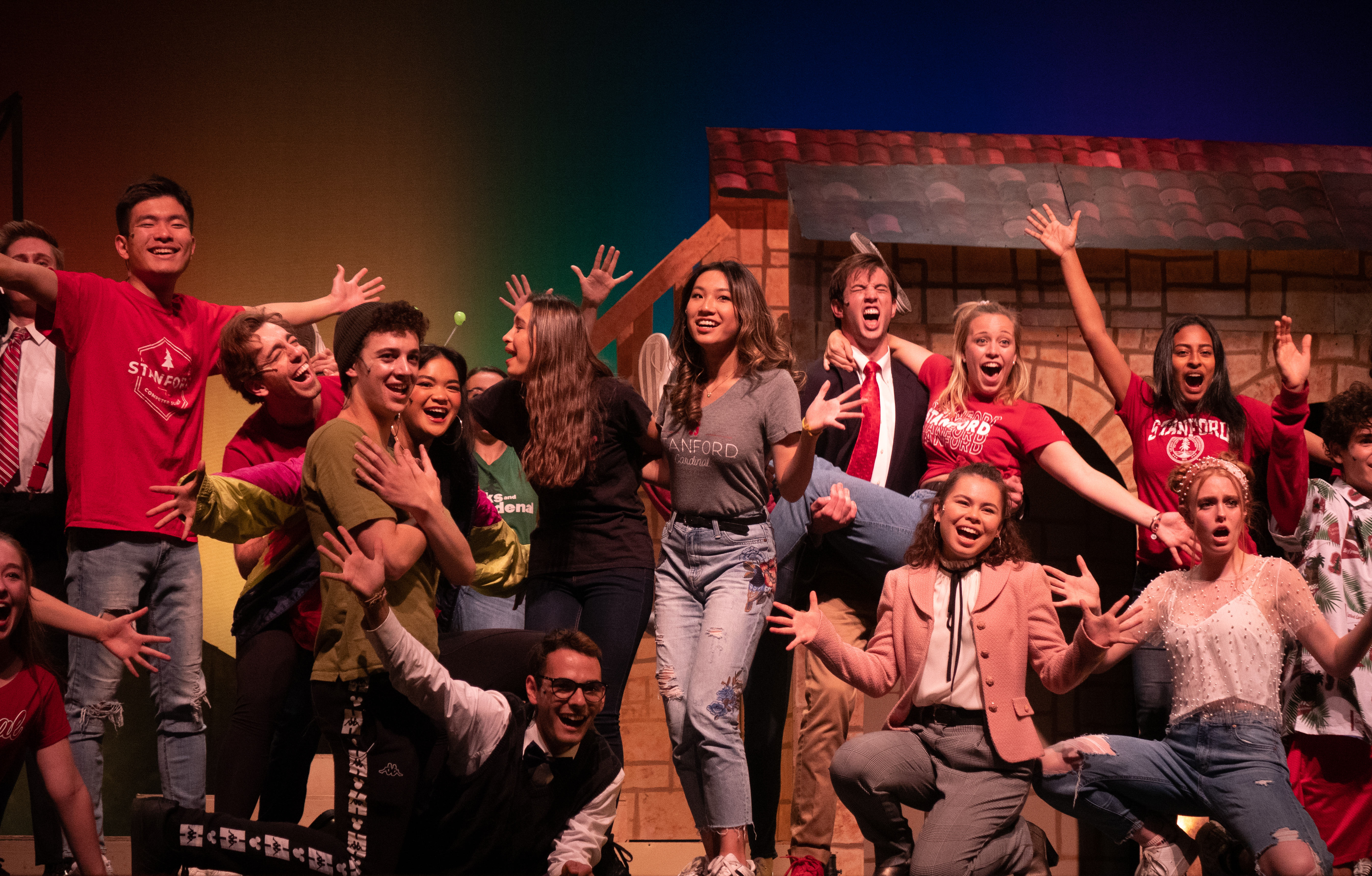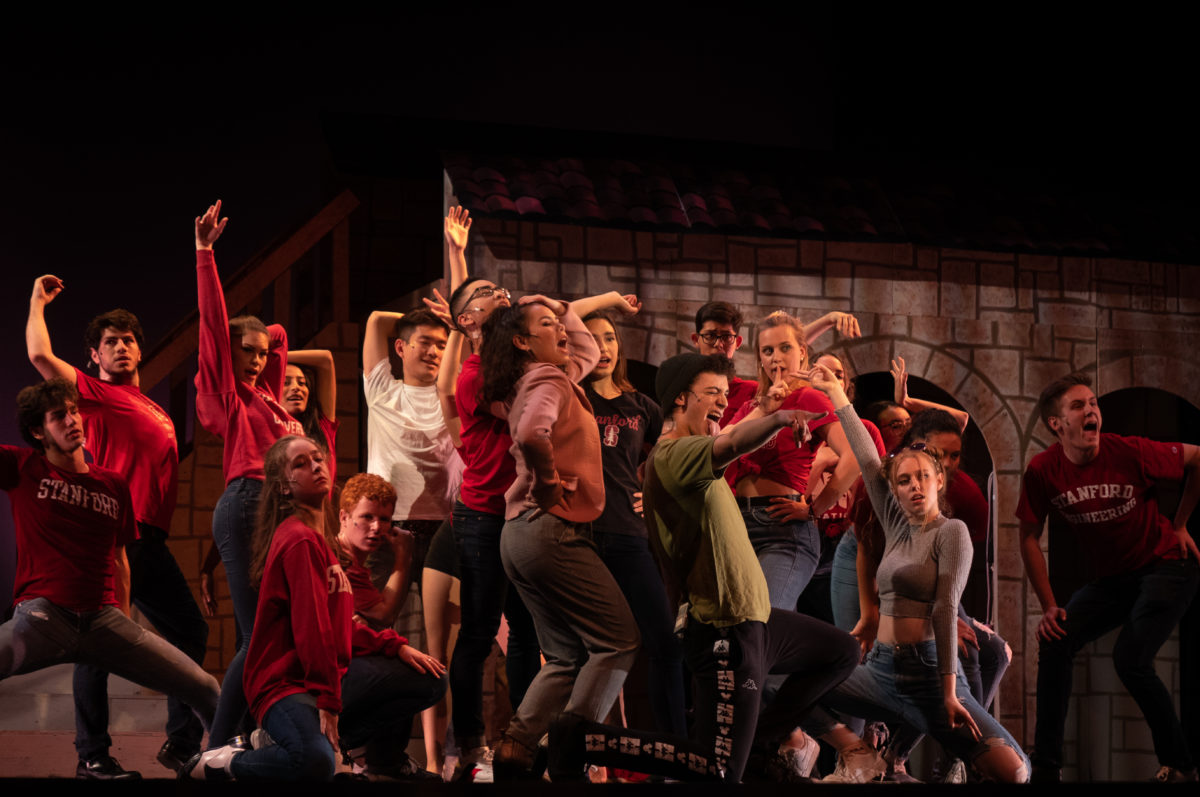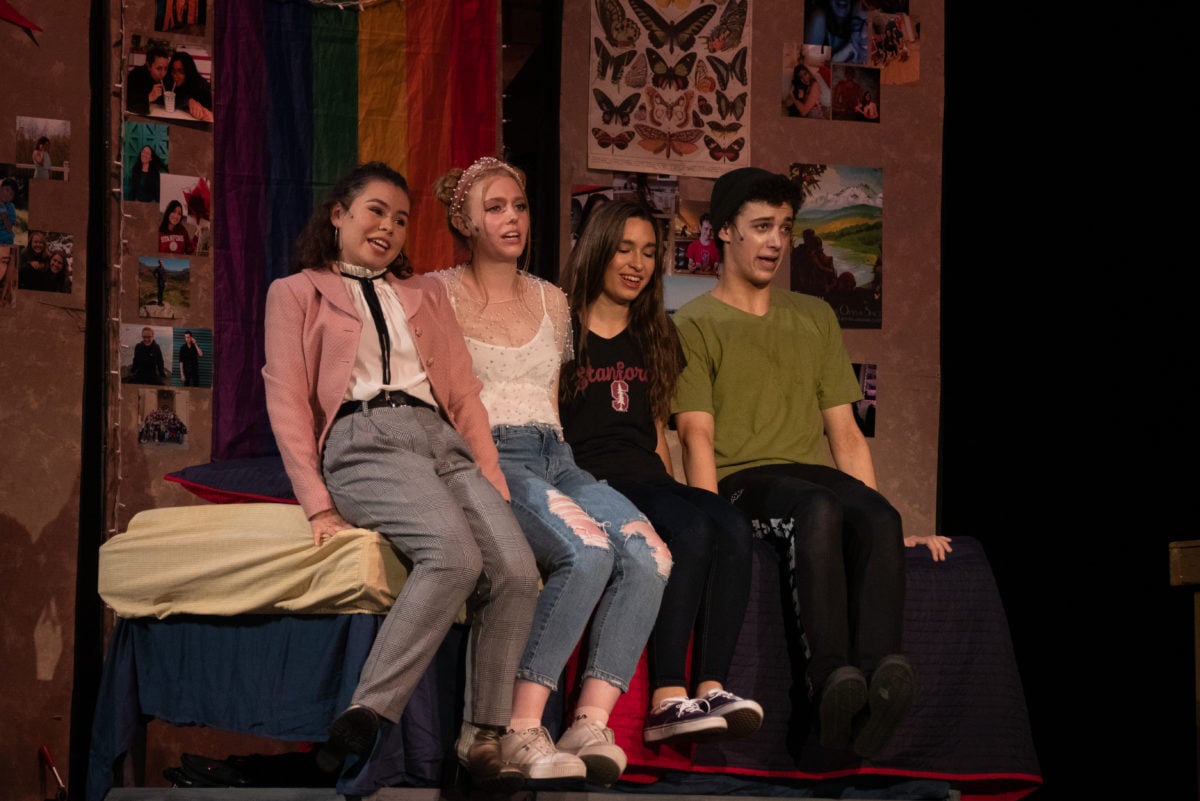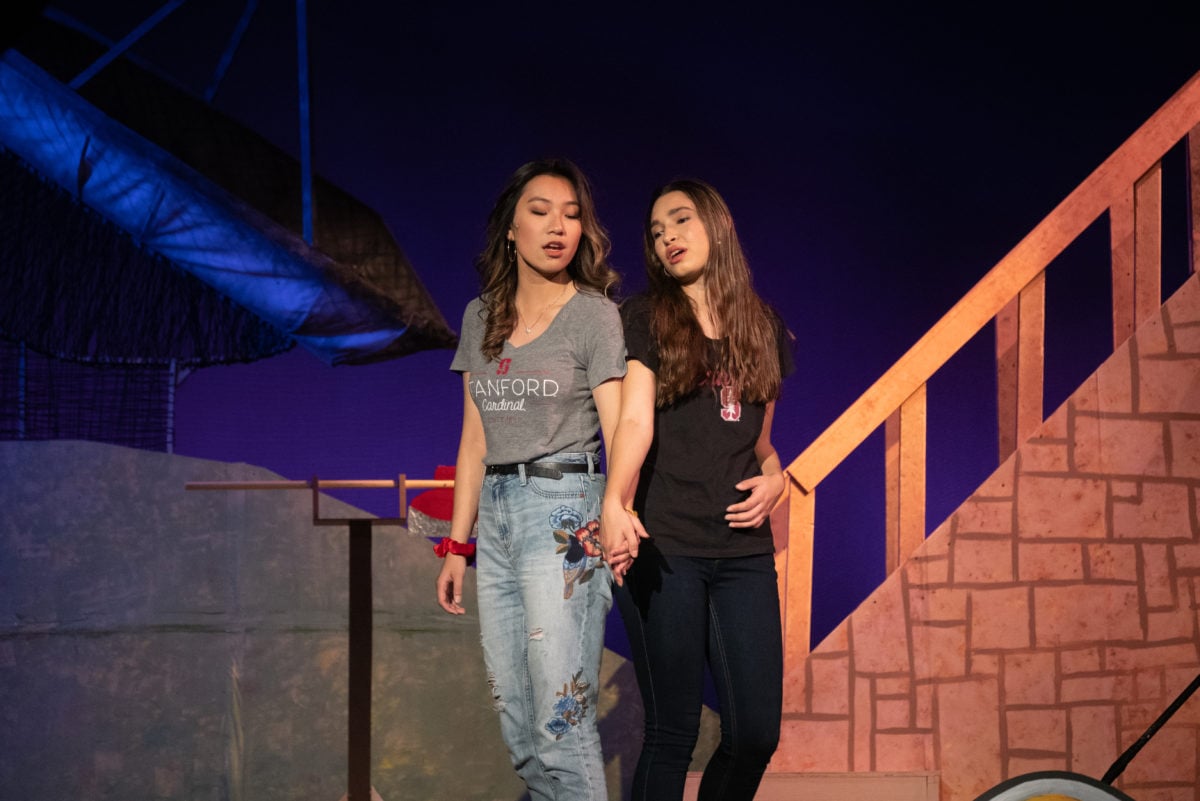Photo: Cole Griffiths / The Stanford Daily Photo: Cole Griffiths / The Stanford Daily Photo: Cole Griffiths / The Stanford Daily
Once Week 7 of fall quarter came around, the murmur around Gaieties rose to a constant buzz, then to an incessant Stanford cry for a theatrical tradition, literally physicalized by the shouting tablers at White Plaza. Among the multitudes of emails advertising the show and emoji-filled messages on the various channels of communication through which the Stanford community could reach me, one line of introduction caught my eye. It was from an Assistant Producer of the show, and it said: “I know Gaieties is usually hella white and hetero but please come, this year we are trying to fix it!!!”
This is a hefty goal, especially for a musical theater production, whose representation in America has often favored the more privileged identities. It’s especially challenging when that musical is Gaieties, which, in the two years I have seen it, has mostly derived its humor from superficial, one-dimensional representation of student groups and hetero-romantic plot lines (even though it has always been “informally queer”). Whether or not this year’s Gaieties manages to overturn these precedents, I’ll leave for you to decide. But it was clear that it does have a team that has made a very passionate effort to do so, which was reflected in the choices for the show.
Without revealing too much, this year’s Gaieties offers a heartwarming look into a very common experience of Stanford students. Centered around a romance between two characters with underrepresented narratives and struggles, Gaieties 2019 touches upon issues of accepting failures and forgiving oneself. Weaved into that narrative is a positive celebration of one’s identity and community, and of how the latter can serve to support and uplift the former. These issues are brought to life by a talented cast of mostly frosh, further bringing home the pertinence of these issues especially to those new to Stanford and to college life.
While poking fun at midterms and Eurotrash may elicit laughter from freshmen, upperclass students who are familiar with Gaieties may feel jaded by these routine jokes by the end of the first act. Director Brenna McCulloch ’20 reveals that one of the difficulties for Gaieties is balancing an audience of a wide variety of experience at Stanford. In my opinion, the pace picks up significantly in the second act, in which jokes become more specifically about Stanford and its student groups, and at times, turn bitingly satirical against the school itself.
It is these moments that make Gaieties more relatable to me. Despite its connection to Big Game week, the show is not just about a football game: a statement that one character makes to question another character’s focus on the Big Game becomes one of the most poignant moments in this year’s Gaities. Situated in a show that claims to celebrate Stanford as a community, the statement implicitly raises the question of why this celebration, in the form as seen on stage — unashamed, passionate, but still incisive against the flaws of the community — does not happen more often beyond a football game against Cal.
The cast of Gaieties has often been comprised of some of the most talented musical actors and actresses on campus, and this year’s cast did not disappoint. The powerful voices of Cleo Howell ’23 and Chloe Chow ’23 cut through Memorial Auditorium’s terrible acoustics. David Mazouz ’23, Drew Feinman ’23 and Izzy Angus ’20 possess great comedic timing. Other cast members and the dance ensemble all have moments to shine on stage. Sometimes the cast’s delivery of jokes fell flat, but with the support of an audience in the house and more practice in the space, I’m sure the cast will achieve their full potential come opening night.
The set, designed by Olivia Testa ’22, Kiki Hood ’23 and Isabella Terrazas ’23, is intricate, with moving pieces that add to the humor of the show, but are simple enough to not take away attention from the characters and the story. The lighting design by Abla Ghaleb ’21, Ian Chang ’23 and Anjali Sukhavasi ’23 accentuates the plot lines and helps the magic of the show come to life. The music written by Liam Fay ’22 and Trenton Chang ’20 is funny, beautiful and celebratory at the same time. There were definitely some hiccups with the tech, which is to be expected at their first dress rehearsal, but they should be smoothed out by the time the show opens.
That said, Gaieties falters in one of the goals it sets for itself: highlighting the narratives of marginalized communities. Perhaps this is simply a by-product of a musical, but when the main character first mentioned her “community,” it felt like an empty buzzword with little meaning. While the characters’ identities are made clearer as the show progressed, the vagueness did drag the show a little at the beginning. Additionally, the show’s traditional poking fun of Stanford student groups, which is usually done by presenting stereotypes of these groups, often conflicts with its stated goal to uplift communities. While this contradiction is not totally conspicuous, it could have been better resolved at the end of the show.
Is this the limit of Gaieties? I’m not saying that there isn’t more the show could do — for example, I would have loved to see more celebration of different body types on stage. And director McCulloch and the rest of the team are passionate about and understand the importance of having marginalized identities on stage, through narratives that are purposefully written into the script and not just represented implicitly through the identities of the actors. In our post-show interview, McCulloch talked about the importance of being in conversation with communities that are being represented on stage, and I hope the next Gaieties continues this uplifting precedent.
What I mean to say is this: Constrained by its form as a comedic musical, it is beyond Gaieties to truly represent the variety of narratives at Stanford. In my personal experience, most of my friends do not break out into song to express their emotions. Gaieties 2019 talks about experiencing and accepting failure at Stanford, but it could only show the onstage representation of failure, the kind that ends in an obligatory happy ending. And we know that life at Stanford does not necessarily end in this way, and sometimes loving yourself and forgiving yourself is more difficult than having a bunch of friends singing positive thoughts at you.
I do not mean this as a criticism against Gaieties, or as expectations that I am disappointed that this year’s Gaieties has failed to meet. Go to Gaieties, see an attempt to represent you, your communities and your relationships at Stanford and see that as that—an attempt, but a very well-intentioned one, from the Gaieties company and from Stanford. And even though those representations can be stereotypical at times, Gaieties — and Stanford at its best — do try to understand and help you feel that you belong here, even though it may not feel that way all the time.
The rest is up to you: be it by learning to forgive yourself for your failures, by finding supportive friends, by finding communities that will make you feel you belong at “a school like this,” by pushing for marginalized identities to be represented in the Stanford narrative and by pressuring Stanford’s administration to be truly inclusive of all identities.
Contact Khuyen Le at khuyenle ‘at’ stanford.edu.



